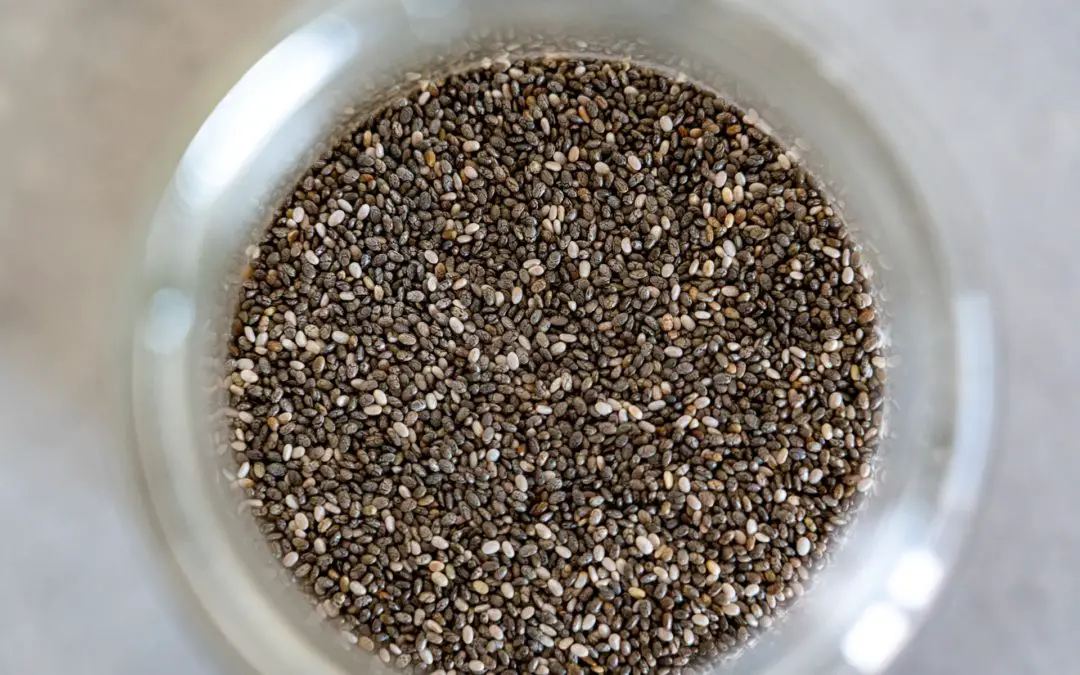Sustainable solutions are inevitable in the long term. It’s right in the word, by definition, anything un-sustainable will eventually be replaced by something that is.
Engineers chase efficient designs, business people chase financially sustainable strategies, and microgreens growers obsess over sustainability. They’re all aspects of the same concept, and it’s an important one.
Growing microgreens in jars and other glass containers is a zero waste, plastic-free way of producing food. Glass baking trays make ideal microgreen containers (other than the lack of drainage holes).
Read-on for some of the most commonly asked questions about sprouting microgreens in jars (and some surprising answers)!
How do you sprout microgreens in a jar?
The first question I’d ask you is do you mean sprouts or microgreens? With sprouts, you eat the root, seed, stem and all, and they’re frequently grown in jars!
With microgreens you cut off the stem and leaves just above the soil-line. Microgreens aren’t commonly grown in jars, but that doesn’t mean it can’t be done!
There’s a good discussion in this article: Sprouts vs Microgreens.
If you’re confident you want to grow microgreens in a jar, all you need a couple of key supplies, and you’re ready to grow:
- A jar (jars that are wider at the top and narrower at the base work best)
- Soil (my top recommendations here)
- Seeds (find out which seeds are suitable for microgreens here)
- Water
Fill the jar up with 1-2 inches of lightly compacted soil. Sprinkle your seeds on top. Water gently, moistening the soil, without pooling water underneath.
Cover the jar to keep the humidity in and encourage even germination. Give your microgreens light and you’re off to the races. One the majority of the seeds have sprouted, you can uncover your jar.
Allow the microgreens to grow 2-3 inches, until the first true-leaves begin to develop, or until they have your preferred taste, then harvest!
Harvesting down inside a jar can be tough. The best method is to remove the entire mass from the jar, then trim. I like to grab all the microgreen stems and leave with one hand, the jar with the other, and lightly pull the microgreens up vertically until the whole thing separates.
You did use a wider mouthed jar right? Otherwise it’s hard to get the root ball and microgreens out in one piece without spilling soil everywhere.
The easiest way to harvest is with scissors or a sharp knife. There are a lot of methods for harvesting microgreens and some really cool specialized equipment if you’re growing a lot.
Can you grow microgreens in glass?
Glass is suitable for growing microgreens because it’s easy to clean, won’t leech anything or react, is waterproof, and looks great.
You don’t have to worry about glass reacting with your soil or fertilizer or growing medium. Glass is very inert, meaning it’s not releasing any chemicals, or absorbing/reacting with them. It also has a really smooth surface, so it doesn’t have any grooves or texture for microorganisms to live in, meaning less mold and disease problems for your microgreens.
A glass baking tray makes a great microgreens growing tray.
The other big problem with glass is that it’s breakable. Glass can shatter if you drop it, and doesn’t do well with big temperature variations (but that’s not really a problem with microgreens).
Another option is to use safer plastics that are suitable for growing microgreens.
Look for recycling codes 2, 4, and 5. Look for Polyethylene, LDPE, HDPE and Polypropylene. Not all plastics are created equal, food safety of plastics is discussed in this article about choosing microgreen packaging.
Sprouts vs Soil Sprouts vs Microgreens
Now we might be splitting hairs here a bit, but I think of it like a continuum. On one end we have raw seeds (young), on the other end we have greens (mature).
In order of increasing maturity, we have sprouts, then soil sprouts, then microgreens. So you could say soil sprouts are an even younger version of microgreens (which are a young verison of baby greens). Confusing? I agree. So I avoid the use of the term soil sprouts and just lump them in with microgreens.
How to grow sprouts in soil
Growing sprouts in soil is even simpler than sprouting in a jar with just water! The reason is that you’re not creating an enclosed moist environment where disease can flourish. Sprouts have a real risk of microbial growth, that’s why it’s recommended to rinse them and flush them out multiple times per day.
With microgreens (sprouts in soil) the plants grow above the soil. You’re harvesting greens and stems that haven’t come into contact with soil where the majority of the microbes are thriving. This is a huge plus! (And also means microgreens generally keep longer than sprouts).
To grow sprouts in soil follow these easy steps:
- Choose a 1-2” deep container (drainage holes are great but not necessary)
- Fill it with 1-2” of soil
- Sprinkle your microgreen seeds on top, (find out how much seed to use here).
- Water enough that the soil is moist, but no watering is pooling in the bottom. Poke a hole with your pinky finger to check if your container doesn’t have drainage holes.
- Then cover with something to keep humidity in, and press the seeds into the soil (ensuring good seed-to-soil contact is key for even germination). You can use another of the same container, or a plastic bag if that’s all you have.
- Leave the seeds covered (high humidity) to germinate for 2-3 days, then uncover and expose to light.
- A few days later your microgreens should be ready to harvest.
Get in-depth information on the steps to grow microgreens in this article.
Can you grow broccoli sprouts in soil?
Growing sprouts in soil is another way of saying microgreens! And broccoli is one of the most popular (maybe THE most popular?) microgreen. So, yes, you can grow broccoli sprouts in soil.
Growing broccoli microgreens in soil vs sprouting in a jar with just plain water has a few benefits in my opinion. The plants can develop more, and have stronger flavor.
I also think the added growing time and sunlight gives them a boost in energy, allowing them to synthesize more complex and beneficial enzymes and chemicals.
You might also find them more attractive, they look great as a garnish, to finish a salad, or sprinkled on top of most things. Broccoli doesn’t, but many microgreens come in really cool colors: yellow, orange, purple, red.
Check out this article for more information on sprouts vs microgreens.

I’m Alex Lafreniere. I learned a lot about plants when I built and operated a landscaping company. But, there’s always more to learn. Ever since travelling across the world, I’ve wanted to find ways to bring more tropical and exotic plants into my life. This is the site where I share everything I’ve learned with you.
This site is owned and operated by Plant Hardware, a sole proprietor headquartered in Calgary, Canada. Plant Hardware is a participant in the Amazon Services LLC Associates Program, an affiliate advertising program designed to provide a means for sites to earn advertising fees by advertising and linking to Amazon.com.Plant Hardware may also participate in affiliate programs with Bluehost, Clickbank, CJ, ShareASale, and other sites. Plant Hardware is compensated for referring traffic and business to these companies.

